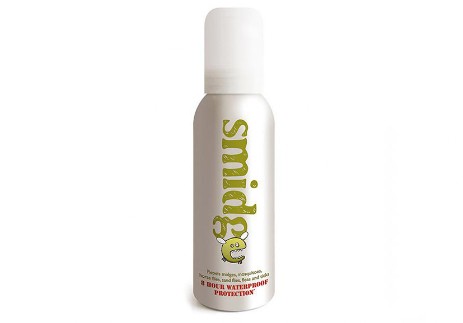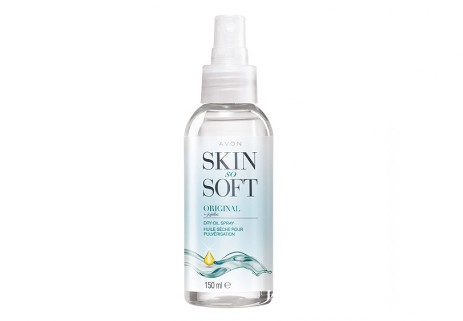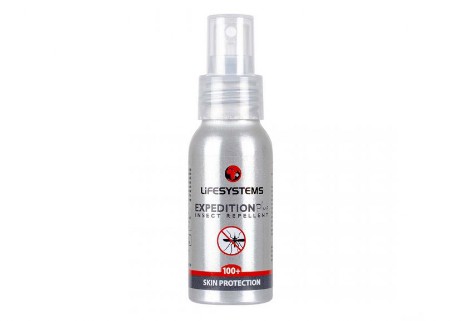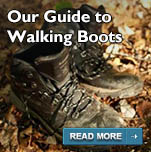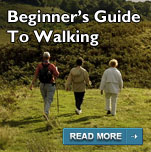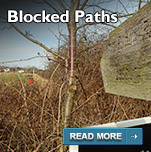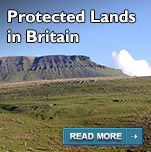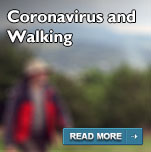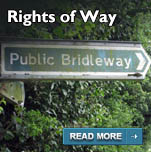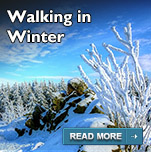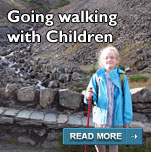How to avoid midges - Our Guide
It's that time of year again: the sun is shining, the days are long,
the hills are beckoning ... and swarms of midges are lying in wait.
The scourge of the Scottish summer, the Highland midge,
or Culicoides Impunctatus, to give it its proper name,
has ruined many a day trip and camping holiday.
It's by no means a recent phenomenon;
back in 1872 even Queen Victoria was forced to abandon a
Highland picnic after complaining of being 'half-devoured' by the beasties.
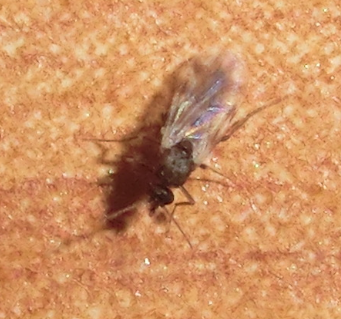
What is a midge?
Midges are tiny flying insects with a wingspan of only 2-3mm. In Scotland, there are usually between 35 - 40 different species of biting midges, but it is the Culicoides impunctatus - or "the Highland Midge" - which walkers in the Highlands are at the most danger from.
But there are others around Britain too...
- the Culicoides Halophilus midge (Coastal Midge) is usually found in the salt marshes on the Scottish coast.
- Culicoides Nubeculosus midges (Farm Midge) occasionally bite humans, but are generally more interested in farm animals.
- Culicoides Obsoletus midges (Garden Midge) are more common in town and around the lowlands. Their bites are much less painful, but still can be nasty.
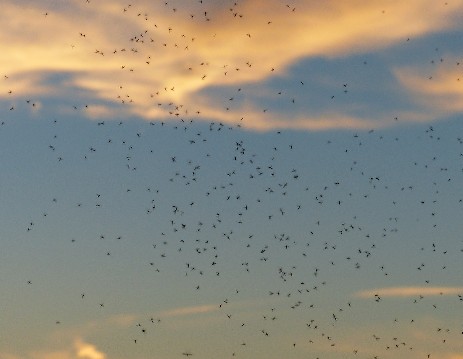
The scale of the problem is huge. Expert Dr Alison Blackwell recently estimated that there were as many as 21 billion biting females in the Highlands and Islands each season.
And it is a particular problem in the Highlands and Western Scotland, where the damp and humid conditions of the wamer months are a perfect breeding ground.
Midge season starts in May and peaks during August - whereas the cooler months of the year are much less of a problem, and are probably the better times to visit midge prone areas. So in Scotland at least, you'll generally have a midge free-er time along the east coast than the west.
How to keep midges away?
Knowing how to keep the midges away makes a big difference to walking in affected areas of the UK. Firstly, the midges that bite humans just happen to be females - male midges feed on nectar and other natural sugars.
Secondly, if you understand how to avoid mosquitoes, then that will help you in avoiding midges too. Like mosquitoes, midges are attracted to carbon dioxide, sweat and certain scents our bodies give off - in fact, they can detect carbon dioxide in your breath from a distance of 200 metres.
Midges are most prevalent at dusk and dawn, and they like damp areas such as boggy bits of ground as well as lake and river edges. They are usually found in areas under trees or with dense foliage.
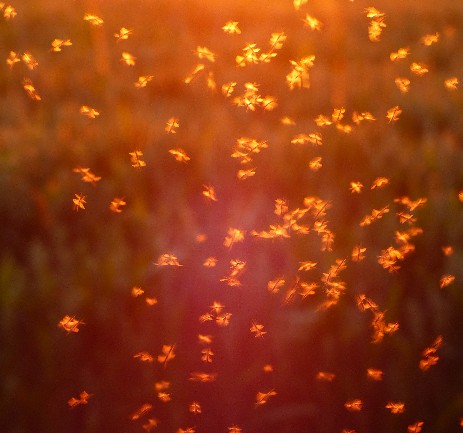
So how can you stop them biting you?
Well, unfortunately, some people seemingly do attact more midges than others, and suffer the biting their attaction brings. So, if you are particularly badly affected, it might be worth avoiding hotspots altogether during the midge season - and go during the off-season instead. It seems they also perfer darker clothing to light, as they use the contrast between colours as a way of homing in on targets - so covering up in whites or light colours makes a big difference.
Fortunately midges don't do well with wind speeds greater than that of a breeze - around 6 mph - so picking a day to go walking that is a tad windy will help keep midges away. If you are camping, it's worth facing your tent into the wind if there is a slight breeze, as midges will shelter behind your tent for protection and you won't open your tent into a faceful of them.
If you are usually troubled by midges, then midge repellents are worth looking at - and they have got more effective in recent years too.
Here are the three most popular ways of keeping midges away...
Smidge That Midge
Smidge is one of the market leaders and it's that for two reasons... one it doesn't contain DEET, and two, it's very effective. The active ingredient in Smidge has been molecularly designed to effectively block the antennal receptors of biting insects, which basically throws them off your scent. It does, however, make you smell not too bad, lasts for up to 8 hours and is sweat resistant.
Avon’s Skin So Soft
If you look at the description for Avon's Skin So Soft, you'll be buying this as it locks-in moisture, leaves your skin soft and smelling great. But it just so happens that as it contains Citronellol it seems to be a very pleasant smelling anti-midge defender.
You can buy it online from Avon and from many outdoor stores.
Lifesystems Expedition
One of the most well-known active ingredient in midge repellents is DEET, and this is one of the best on the market. Lifesystems Expedition 100+ range combines DEET with pyrethrin - which acts as a bite inhibitor to actually stop biting. The "100+" means it will last for over 100 hours. It should be pointed about DEET based repellents can ruin some plastics, including watchstraps, so be careful with applying.
Our Top Tips To Avoid Midge Bites
- Cover up exposed skin as far as possible
Covering up exposed skin is still the best way of preventing midge bites. Wear white or a light coloured clothing for the best prevention.
- Use a repellent with one of the four active ingredients
It's a matter of personal choice, but a repellent with one of four main active ingredients is best to protect you against midge bites. They are:DEET (diethyltoluamide), IR3535 (Ethyl butylacetylaminopropionate), saltidin/icaridin and citriodiol.
- Don't scratch if you are bitten
Like with mosquito bites, scratching is the worst thing you can do when bitten by a midge. To soothe the pain, rub on an anti-histamine cream or take an anti-histamine tablet.
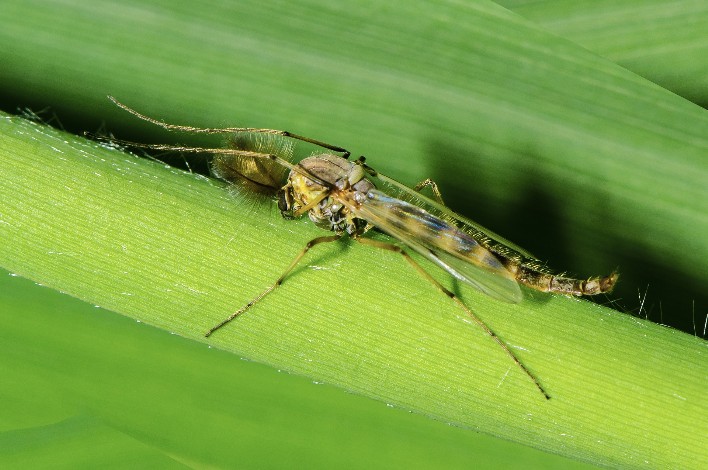
- Keep walking if you encounter a midge swarm
If you encounter a midge swarm, keep walking - if you even if you have to walk through it. Midges can't fly as fast as you can walk, so you'll out-pace them.
- Change the time you walk
Midges are most active in low light conditions, such as dawn and dusk - and overcast days - so avoiding these times is a good idea. As is walking on a fairly blustery day, as they they prefer still to windy conditions.
- Think about where you camp
If you are camping in areas prone to midges, try avoid any damp and boggy areas, as well as places with dense foliage. Camp in more exposed and breezy area, and pitch your tent into the wind.
- Lastly... avoid the midge season entirely!
If you are particularly badly bitten regularly, use the midge forecast to see which areas are less problematic than others. Or, avoid midge season altogether and go to the favourite midge areas at times they aren't there.

